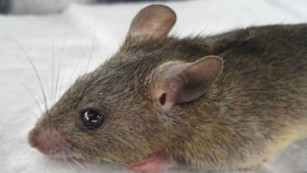Seven reasons we’re at more risk than ever of a global pandemic
(CNN)It could take just one cough, one kiss, one touch or even one bite to change not only your life, but the lives of everyone around you — and for months or even years.
In most cases, the closer those people are to you, the greater the risk. But it isn’t always that simple.
The risk at hand: an infectious outbreak.
Public health experts believe we are at greater risk than ever of experiencing large-scale outbreaks and global pandemics like those we’ve seen before: SARS, swine flu, Ebola and Zika.
More than 28,000 people were infected during the 2014-16 Ebola epidemic, with over 11,000 deaths. And as of March 10, 84 countries have reported Zika transmission. That disease was discovered in the 1940s, but had its first outbreak in 2007 in Micronesia, and more recently began spreading toward the end of 2015.
Every time, the infection’s arrival is unexpected and its scale unprecedented, leaving the world vulnerable.
Experts are unanimous in the belief that the next outbreak contender will most likely be a surprise — and we need to be ready.
“We’re only as secure in the world as the weakest country,” said Jimmy Whitworth, professor of international public health at the London School of Hygiene & Tropical Medicine. With so many health systems and economies in a fragile state, this means we are far from secure.
“Infectious diseases respect no boundaries,” he said. The World Health Organization is alerted to hundreds of small outbreaks every month, he noted, which it investigates and uses to predict the chances of a bigger problem.
“There are little clusters of outbreaks occurring all the time, all over the place,” Whitworth said.
But with infections disregarding borders and their battle lines against humans drawn, he believes the way we live today is what opens us up to risk.
“(Many) aspects of modern life put us at more risk. We are more ready than before,” he points out, highlighting the International Health Regulations Global Outbreak Alert and Response Network and countries with national rapid response teams — such as the United States, UK and China — ready to tackle any emergency.
“But the stakes keep getting raised,” he said. Here’s why.
1. Growing populations and urbanization
The facts around urban living are simple: You live, eat, work and move closer to people than in any rural setting, and with this comes greater opportunity for disease to spread through air, mosquitoes or unclean water.
As populations grow, so will the number of city-dwellers, with the United Nations predicting that 66% of the global population will live in urban areas by 2050.
More people in cities can “put a strain on sanitation,” said David Heymann, head of the Centre for Global Health Security at the think tank Chatham House. Beyond people’s close proximity, “this is a second source of infection,” he said, and a third is increased food demand, causing farmers to grow more food, with more animals, making them likely to live closer to those animals as well.
Animals are reservoirs for many diseases, including cattle for tuberculosis and African sleeping sickness (trypanosomiasis) and poultry for avian flu.
With people moving more regularly from — and between — rural settings to urban ones, the chances of them becoming infected and then living in close quarters with others further boosts the potential for things to spread.
2. Encroaching into new environments
As numbers of people grow, so does the amount of land needed to house them. Populations expand into previously uninhabited territories, such as forests. With new territories comes contact with new animals and, inevitably, new infections.
For one example, “Lassa fever occurs because people live in the forest and destroy it for farming,” Heymann said.
Lassa fever is a viral disease spread by contact with the feces of infected rodents. It can cause fever and hemorrhaging of various parts of the body, including the eyes and nose. Person-to-person transmission is also possible, albeit less common. Outbreaks generally occur in West Africa, with higher than expected rates in Nigeria since 2016.
Heymann explains that Lassa is one example of people living near forest environments where infected rodents reside, but destruction of those forests for agriculture leaves the animals nowhere to go — other than humans’ homes.
“The rodents that live there can’t get food and go into human areas for food,” he said.
3. Climate change
Evidence continues to emerge that climate change is resulting in greater numbers of heat waves and flooding events, bringing more opportunity for waterborne diseases such as cholera and for disease vectors such as mosquitoes in new regions.
“Flooding is occurring with increased frequency,” Heymann said, and with that comes greater risk of outbreaks.
Between 2030 and 2050, climate change is projected to cause about 250,000 additional deaths per year from heat stress, malnutrition and the spread of infectious diseases like malaria, according to the World Health Organization.
With disease carriers like mosquitoes increasingly able to live in new unprotected territory, the risk of an outbreak is high.
Whitworth cited the current yellow fever outbreak in Angola, which has infected more than 350 people. He explained that as workers from China returned home from Angola, any yellow fever infection could have been transmitted by mosquitoes in China.
But, the workers’ return in winter meant the insects weren’t around to transmit through bites.
CNN










